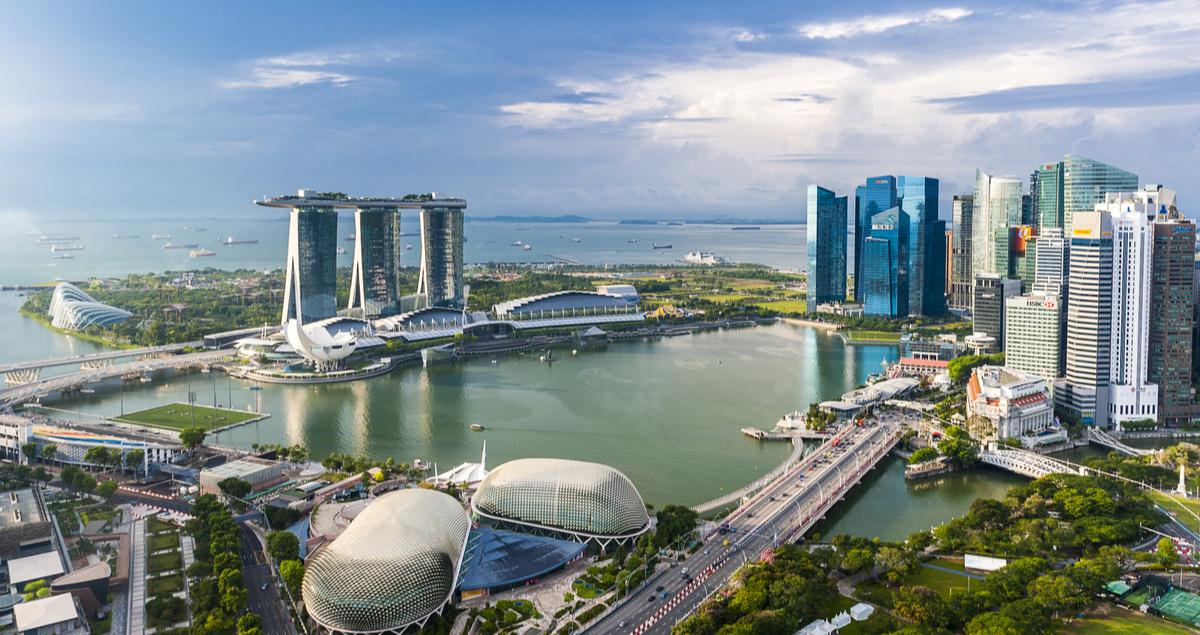Below the surface of Singapore lies the future of keeping cool

When you flick the switch on a typical air conditioning unit, you’re setting off a process that hasn’t traditionally boasted green credentials.
Conventional cooling devices account for as much as 10% of all global greenhouse gas emissions, according to the World Bank. It predicts that, if left unchecked, emissions from cooling will double by 2030.
Cooling’s potential impact on the environment grows even starker over the longer term, as temperatures in cities that we currently regard as extreme potentially become the norm within 30 years. This will mean a global increase in demand, and in regions not normally associated with air conditioning, such as northern Europe.
However, the International Energy Agency (IEA) predicts that the majority of demand growth will come from emerging economies, particularly in Southeast Asia. The region, where currently only 15% of the population has access to air conditioning, is predicted to see “skyrocketing” sales of units over the next 20 years.
Finding a way to sustainably keep the region cool is critical and some cities may have found the answer – district cooling.
District cooling – a secret weapon in the battle against climate change
As one of the hottest and most humid countries, Singapore is heavily reliant on year-round air conditioning. With so many office and residential buildings relying on traditional cooling units, which emit heat, it’s no wonder the city is warming twice as fast as the rest of the world.
The United Nations calls district cooling a “secret weapon” in the battle against climate change, so effective is its power to achieve sustainable cooling on a grand scale.
Singapore’s Marina Bay financial district, offices, shops, hotels, and restaurants are all kept cool by one source: the world’s largest underground district cooling system.
Based around a central subterranean plant, the system channels water along 5 kilometers of closed-loop pipe network, giving it the power to lower temperatures across a substantial neighborhood of buildings. Cold supply water flows along the pipes, entering the heat exchanger in each building, where it absorbs heat and cools the building before making its way back to the central plant.
How it works
Driving the whole chilling process are Mitsubishi Heavy Industries (MHI) Group’s centrifugal chillers. Just like a conventional air conditioning unit, a centrifugal chiller converts refrigerant from liquid to gas and back again to chill the water in the system’s pipes – it just does it on a much larger scale.
The largest chiller units measure around 12 meters long, six meters tall and wide, and weigh more than 160 metric tons, each with a cooling capacity equivalent to approximately 3,600 residential air conditioning units. The centrifugal chillers use a highly efficient compressor design with an aerodynamic profile that minimizes mechanical energy loss.
This vast capacity gives them an economy of scale that makes them much more efficient than individual domestic units: they are able to generate six times the amount of thermal energy from each unit of electricity.
The Marina Bay district cooling system uses 16 of these centrifugal chillers, including one that can operate in two ways: as well as using chilled water, this unit can be switched to ice-making mode. This turns it into a massive ice storage tank, making ice during off-peak times when the cost of electricity is much lower, such as at night.
Throughout the day, warm water that has sucked the heat from Singapore’s buildings flows back over the ice, which cools the water, before it returns to the buildings again. Matching production to demand in this way further boosts the Marina Bay system’s energy and cost-efficiency.
Cost-effective chilling
District cooling systems are also cost-effective, since it is cheaper to chill many buildings together than each one individually: in Marina Bay it is estimated that the system cuts energy demand for cooling by 40% – the equivalent energy usage of 24,000 apartments in the city-state.
Capital costs for district cooling systems are lower, too, as there’s no need for individual chillers or cooling towers, plus maintenance costs are pooled.
Being buried underground also has the social side-benefit of freeing up precious roof space in densely populated cities.
As the vast potential of district cooling and its role in achieving multiple socio-economic and environmental goals is revealed, cities around the world are waking up to the benefits.
People will always want to cool down in hot climates – district cooling offers them a more sustainable way to do it.





